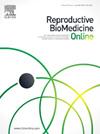卵泡素δ剂量和新鲜胚胎移植后的卵母细胞产量和活产率:个体患者数据荟萃分析。
IF 3.7
2区 医学
Q1 OBSTETRICS & GYNECOLOGY
引用次数: 0
摘要
研究问题:对于接受个体化促卵泡素刺激卵巢的妇女,取多少卵母细胞与获得活产的最佳机会有关?设计:对来自5项随机对照试验的1772例患者进行个体患者数据荟萃分析,根据血清抗本文章由计算机程序翻译,如有差异,请以英文原文为准。

Oocyte yield and live birth rate after follitropin delta dosing and fresh embryo transfer: an individual patient data meta-analysis
Research question
What number of retrieved oocytes is associated with the optimum chance of achieving a live birth for women undergoing ovarian stimulation with individualized follitropin delta?
Design
An individual patient data meta-analysis was performed on 1772 patients from five randomized controlled trials using individualized follitropin delta for ovarian stimulation with fixed daily dosing based on serum anti-Müllerian hormone (AMH) level and body weight. Live birth rate (LBR) and ovarian hyperstimulation syndrome (OHSS) were evaluated in relation to the number of oocytes retrieved. Predicted LBR was obtained using a logistic regression analysis with fractional polynomials. Subgroup analyses were performed based on number of oocytes retrieved, age and AMH level.
Results
The analysis included patients treated with follitropin delta who had at least one oocyte retrieved. The mean number of oocytes retrieved was 10.4, and overall LBR was 32.1%. Predicted LBR increased with the number of oocytes retrieved, reaching >34% for patients with 8-14 oocytes retrieved, and peaking at 34.9% for patients with 11 oocytes retrieved. LBR declined gradually beyond retrieval of 14 oocytes. LBR was 27.8%, 33.6% and 30.9% for patients with 1-7, 8-14, and ≥15 oocytes retrieved, respectively. LBR decreased with increasing age: 32.7%, 30.7% and 23.4% at <35, 35–37 and 38–42 years, respectively. The incidence of OHSS (any grade) was 2.1%, 5.2% and 17.0% for patients with 1-7, 8-14, and ≥15 oocytes retrieved, respectively.
Conclusions
After ovarian stimulation with individualized follitropin delta, LBR in fresh transfer cycles was highest for patients with 8-14 oocytes retrieved, and peaked in patients with 11 oocytes retrieved. The results support the appropriateness of the follitropin delta dosing algorithm.
求助全文
通过发布文献求助,成功后即可免费获取论文全文。
去求助
来源期刊

Reproductive biomedicine online
医学-妇产科学
CiteScore
7.20
自引率
7.50%
发文量
391
审稿时长
50 days
期刊介绍:
Reproductive BioMedicine Online covers the formation, growth and differentiation of the human embryo. It is intended to bring to public attention new research on biological and clinical research on human reproduction and the human embryo including relevant studies on animals. It is published by a group of scientists and clinicians working in these fields of study. Its audience comprises researchers, clinicians, practitioners, academics and patients.
Context:
The period of human embryonic growth covered is between the formation of the primordial germ cells in the fetus until mid-pregnancy. High quality research on lower animals is included if it helps to clarify the human situation. Studies progressing to birth and later are published if they have a direct bearing on events in the earlier stages of pregnancy.
 求助内容:
求助内容: 应助结果提醒方式:
应助结果提醒方式:


